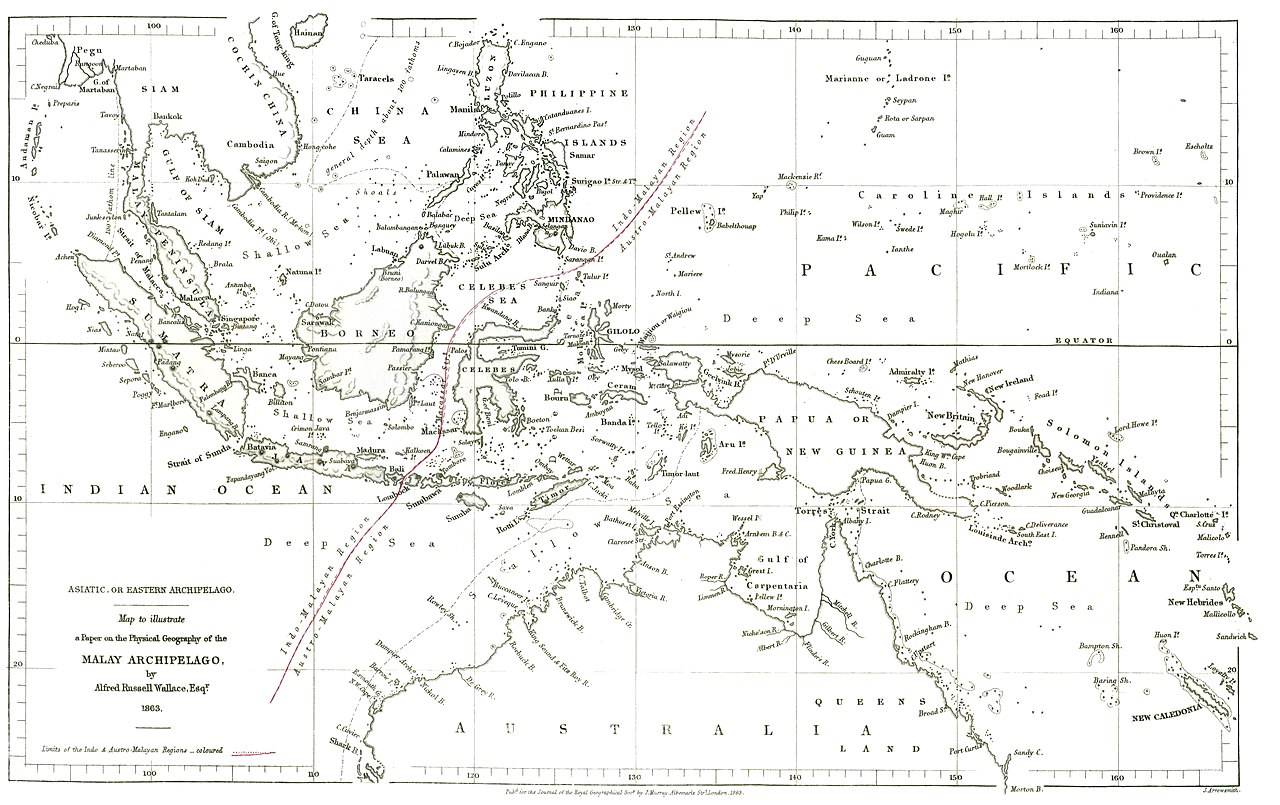Invisible barrier that runs through Indonesia finally explained by scientists
Researchers now understand why there is an uneven distribution of animal species on either side of the mysterious boundary, known as the Wallace Line.
The longstanding puzzle of a gigantic evolutionary line has been solved more than 160 years after the boundary was first drawn up. The confusing line, which is both imaginary and real, arose millions of years ago after a continental collision triggered extreme climate change that impacted the species on each side of the divide in different ways, a new study reveals.
The boundary, known as the Wallace Line or Wallace's Line, is a biogeographical barrier first mapped out in 1863 by British naturalist and explorer Alfred Russel Wallace, who famously proposed the theory of evolution by natural selection at the same time as Charles Darwin.
On his travels across the Malay Archipelago — a chain of more than 25,000 islands between Southeast Asia and Australia, which includes modern-day countries such as the Philippines, Indonesia, Malaysia, Papua New Guinea and Singapore — Wallace noticed that the species he encountered drastically changed past a certain point. This point later became the boundary of the Wallace Line. (Part of the line has since been redrawn to reflect updated findings in the region.)
On the Asian side of the line, the creatures exclusively originate from Asia. But on the Australian side of the boundary, animals are a mix of both Asian and Australian descent. For over a century, the asymmetric distribution of species across the Wallace Line bamboozled ecologists. Something happened that enabled Asian species to move in one direction but prevented Australian species from moving in the reverse direction, but it wasn't clear what that was.
Related: 100 years after death, evolution's other discoverer gains recognition
But in the last few years, a new theory has emerged: Researchers now believe that the uneven distribution of species across the Wallace Line was caused by extreme climate change resulting from tectonic activity around 35 million years ago, when Australia broke away from Antarctica and crashed into Asia, birthing the Malay Archipelago.
In the new study, published July 6 in the journal Science, researchers used a computer model to simulate how animals were impacted by the climatic effects triggered by the continental mash-up. The model factored in the dispersal ability, ecological preferences and evolutionary relatedness of more than 20,000 species found on either side of the Wallace Line. Results showed Asian species were much better suited for living in the Malay Archipelago at the time.
Get the world’s most fascinating discoveries delivered straight to your inbox.
Shifting climate
The main climatic changes at the time were not caused by the movements of the continents themselves but rather by how they impacted Earth's oceans.
"When Australia drifted away from Antarctica, it opened up this area of deep ocean surrounding Antarctica which is now where the Antarctic Circumpolar Current (ACC) is," study lead author Alex Skeels, an evolutionary biologist at the Australian National University, said in a statement. "This dramatically changed Earth's climate as a whole; it made the climate much cooler." (The ACC, which circles Antarctica, is the world's largest ocean current and continues to play a key role in regulating Earth's climate today.)
The new model revealed that the changing climate did not affect all species equally. The climate in Southeast Asia and the newly formed Malay Archipelago remained much warmer and wetter than in Australia, which had become cold and dry. As a result, creatures in Asia were well-adapted to living on the Malay islands and used them as "stepping stones" to move toward Australia, Skeels said. But "this was not the case for the Australian species," he added. "They had evolved in a cooler and increasingly drier climate over time and were, therefore, less successful in gaining a foothold on the tropical islands compared to the creatures migrating from Asia."
The researchers hope their model can be used to forecast how modern-day climate change will impact living species."[It could] help us predict which species may be better versed at adapting to new environments, as changes to Earth's climate continue to impact global biodiversity patterns," Skeels said.

Harry is a U.K.-based senior staff writer at Live Science. He studied marine biology at the University of Exeter before training to become a journalist. He covers a wide range of topics including space exploration, planetary science, space weather, climate change, animal behavior and paleontology. His recent work on the solar maximum won "best space submission" at the 2024 Aerospace Media Awards and was shortlisted in the "top scoop" category at the NCTJ Awards for Excellence in 2023. He also writes Live Science's weekly Earth from space series.





